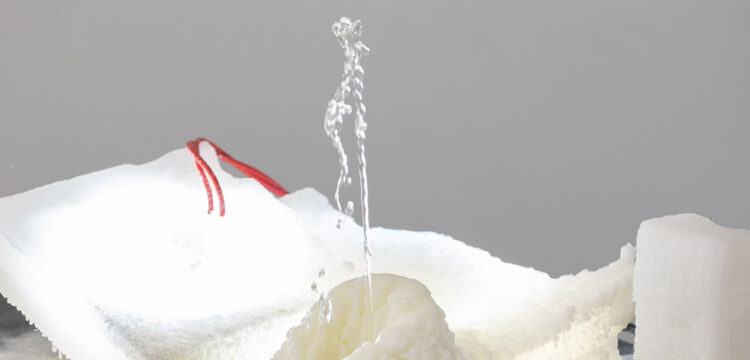More Than One Death In You
“The Last Terminal: Reflections on the Coming Apocalypse (Part 3 – The Phantasy)” at Rib
The exhibition The Last Terminal: Reflections on the Coming Apocalypse continues to evolve at Rib Rotterdam. In their program, Rib gradually adds new works and replaces some of the existing ones, building a narrative that evolves whilst rethinking their pathways and future. After Marianna Maruyama’s The Body, The Plane, The Camera on Part 1 – Survival of the Fittest: the big toe of little big man, and Trans What? Pondians! by Reinier Vrancken on Part 2 – Natural Selection, we’re very glad to host this update-commentary by Jan Verwoert on Part 3 – The Phantasy.
1. Death: when yours is no longer yours
There are so many ways to experience death in your life. Until recently I wilfully ignored them all. Of course, I had my reasons, so if you had asked me I could have told you why. It’s because of an intuition that I harbour most deeply, and which, in his Ethics, Spinoza succinctly puts into words: “Homo liber de nulla re minus quam de morte cogitat et ejus sapientia non mortis sed vitae meditatio est. A free human being thinks of nothing less than of death, and their wisdom is a meditation not of death but of life.” [1] If you truly look at life, from the vantage point of life, in the light of all the forces of change that charge life with life—that’s what I take this sentence to mean then also death is but one transition within life, among many. So if the real force of life, as Spinoza maintains, is love, divine love, then love will see you through, even during the most painful changes. It ought to. Right?
The trouble started for me when precisely the people whose love inspired me to trust in the love of life, and its changes, started showing signs of carrying death within them. I mean these moments when someone gets so sick that all of the weight people put on when they eat and live is gone, and you see the outlines of the bones in their face come through, so that if, in a moment of exhaustion, the spark of life in their eyes briefly dims, you realise: This might be exactly how it will look when this person will have stopped breathing, speaking, and experiencing the life you now still share. It’s a shock, and talking smart about it won’t help, least of all the person who’s facing death, their death, at this time.
But is it their death, like only, really? This is sort of the question that’s been unmaking the life-loving Spinozian in me: If their death was theirs, really only theirs, it would also be truly our transition to go through together, and I guess that’s a good thing then. But in the case of my mother, and, to be frank, she is who I’m thinking of here, I also see a particular kind of terror, subliminally yet persistently burn in her eyes, even and especially when the sparkle of her person momentarily dims, a terror that also makes the muscles of her body contract when she shuffles about, a terror that I recognise now as most likely having been there all along, but which nonetheless presents itself as an alien entity, an angel of death, if you will, which, insofar as it possesses her and has done so for God knows how long, is inseparable from her, but still not her. It’s its own thing, and I’ve tried calling it forth by what I intuit to be its proper name, only to find that exorcism in reality of course is trickier than in movies.
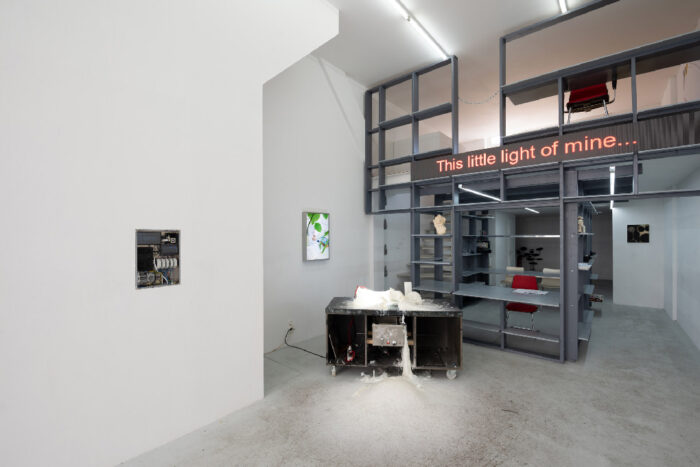
One name that I nonetheless believe this angel of death to have is Gomorrah. It’s what the Royal Air Force called the operation that had them fire bomb the hell out of Hamburg’s working class’s living quarters, after only attacking the ship yards had failed to halt military production during WWII. It’s what my mother lived through as a small kid. Her Dad was a Nazi, motorcycle mechanic, hot shot, soldier, in it for the fast ride, who had already managed to get himself killed early on in the war, so yes, I agree, Germans knew they had it coming. No excuses there. Still, and I might be kidding myself, but I feel that, when the sparkle dims, I can see that kid in mother’s eyes learning two lessons from the angel of death when it bore down with ravaging airborne fire upon her hometown:
a) You must hold on to life—with her mother in turn having both hands full carrying supplies and valuables, my mom was tasked with holding on to her little brother on the way down from their flat to the air raid shelter—and under no circumstances let go!
b) Regardless of how hard you hold on, none of it matters, because no one can say whether you’ll ever make it out of that shelter, or be buried alive under rubble or suffocate when the firm storm above consumes all oxygen.
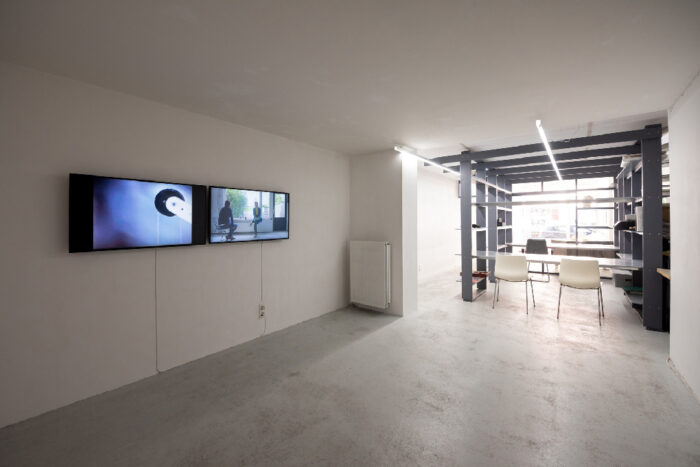
Perhaps these were the two lessons she lived by ever after: Holding life together, never letting go, terrified by what would happen if she did, knowing fully well, as her fears would confirm, that it might not make a difference in the end anyhow. Facing death now, I feel and fear, she can’t face it as hers, because after what the angel taught her, she can neither let life go, and ready herself for resting in peace, nor can she live what is left of life to the fullest, because with the despair over, with old age, and the loss of power to hold everything together, would seem to prove that it all led to nothing anyhow, and taints every waking hour. Knowing Churchill sent that angel over, I would sincerely like to have a word with him. But yes, I know that at the end of the day it wasn’t him but an entire military industrial complex on all sides of the war that had hedged its bets so well that heavy duty carpet bombing, here as there —“coventrising” Goebbels had called it, “hamburgising” being the term the Allies subsequently changed that into—meant maximum output of heavy metal weaponry and top profits skimmed off of an economy, and infrastructure of machinic-industrial death production. This industrial death is what I’m talking about, the one I cannot fit in with the love of God, is the other impersonal macro-structural death that lives in my mother, and won’t let her let life go in peace, and it makes me desperate and angry.
2. Death: industrial and personal
This is where I’m currently coming from personally, and yes, it also to no small degree, determines what I’m looking for in art and conversations. So, while visiting The Last Terminal: Reflections on The Coming Apocalypse: Part 3 – The Phantasy, spending time with the works in the group exhibition and chatting with curator Maziar Afrassiabi, it felt like the subtext to a lot of what I hence want to talk about may rhyme quite strongly with what may also be going on in, and between, the pieces on show. For it seemed like the desire voiced by them was also double: The desire to, on one hand, return the love of life to the experience of death, the hopeful sense that who has died, or looked death in the eye, may have done so in a way and a situation that let them experience the coming transition as an expression of their power to live and let go of life—doubled by the desire to, on the other hand, fight the fear, anger and despair that crushes the hope of realising death as a power of life, prompted by seeing too clearly how some macro-economy-infrastructure-industry at the core of a global modern necropolitics may have terminated yet another life, as a matter of course, and cruelly casual byproduct of its workings.
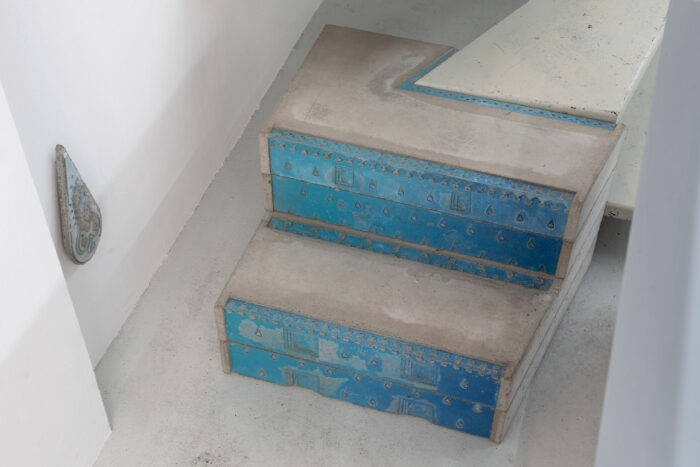
This twofold sense of loving hope and angry despair seemed to speak so strongly out of the (gesture of exhibiting) the postscript to the movie Baadeh Sabah / Le Vent des Amoreux by Albert Lamorisse, shot in 1970 but edited and released posthumously by his wife Jean Claude Dupov and son Pascal in 1978. In this short film clip the two work through the death of Lamorisse during the making of the original movie, some of the footage that was later rescued from the camera having been shot seconds before his fatal accident: Lamorisse had been commissioned by the Shah of Iran to shoot a picture about his country’s glories, but had been dissatisfied with the initial outcome featuring aerial shots of local landscapes accompanied by a voice-over praising them as sites of poetry, and ordered the filmmaker to return and film status symbols of modern progress including labs, power stations and the recently built, most prestigious Amir Kabir dam. During the shot, the helicopter carrying Lamorisse and his crew got tangled in high wires over the dam, and crashed, killing everybody on board.
The monumental piece of infrastructure of the dam, violently inserted between mountains, and built to testify to the power invested in the Shah to transform the earth with modern technology, literally is what the filmmaker saw when he encountered, and filmed what? His death? Or an end that could have most easily been avoided, had it not been for the film industry job that held Lamorisse hostage, and condemned him to follow the whims of a dictator (who probably couldn’t have cared less who was behind the camera as long as industry standard footage celebrating his triumphs was being delivered)? So what are we looking at: the terminal images of a filmmaker who met death in the act of doing what he had lived and loved to do? Or evidence of a life lost to the general demands of a regime to see its power reflected in a grandiose piece of infrastructure, and an industry standard picture produced of it? How torturous never to know whether it was the one death, or the other, or actually both?
In a previous iteration of The Last Terminal, the postscript had been shown alongside the original movie on two screens next to a text piece by Marije de Wit. Big letters cut from wood, mounted to the wall, and illuminated by light-bulbs spelled out the short sentence: THIS MEANS THAT MUCH (also the work’s title, 2021). This could indeed mean little, or a lot. As a pronouncement of general equivalency, it may read as saying that, flatly, “this” has the same status, value, and meaning as “that”, so any difference is flattened out, nivellated, rendered null and void, but by what? Economy and industry? Life and death? The words might, however, be seen to signify the exact opposite, namely an affirmation of outstanding importance, attributed to one particular thing, in terms intentionally left unclear, as the value and meaning of (what is referred to by) “this” goes beyond words, and estimations of equivalency, so one can but gesture towards it, emphatically, by pointing out it means “that much” (to you), unspeakably much. Flattening or emphasis? Equivalence or exception? What if it’s both?
If we read the piece as mirroring the painful ambivalence evoked by the screening of the film, and postscript by, or rather dedicated to Lamorisse, it translates as: What if the personal death, emphatically speaking, the end of a singular life irreplaceably lost, also, from a parallel point of view, flatly put, played itself out as a random incident within a macro-power-structure of economic equivalences (a ruler’s pocket money for more pictures from/of the industry) that flattened out the significance of a filmmaker’s death, as one cypher among numerous others? Nonetheless, this being that, both deaths manifest as one. Two deaths, one personal, the other industrial, were still died as one, referring the meaning, status and value of one back to the other, unceasingly, in a terrifying loop: the personal means the industrial means the personal means the industrial, and so on.
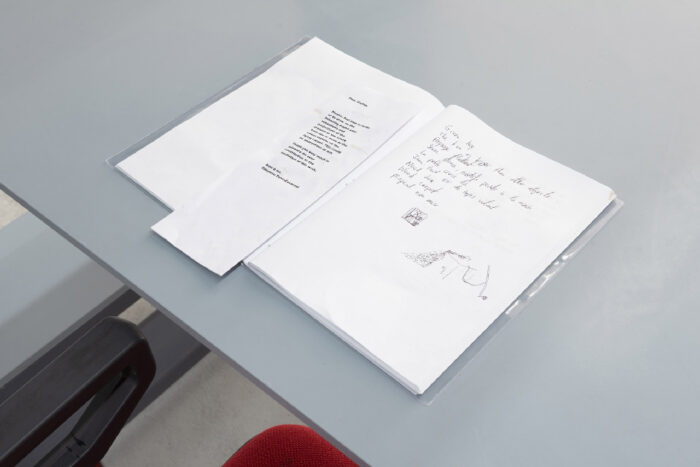
Personal and industrial death looping back on each other, is a circle that indeed seems harder and harder to break the more you read up on the life and art of Lamorisse:[2] He is first of all also the maker of apparently one of the most famous children’s movies ever called: Le Ballon Rouge (1956). The short film features his son, Pascal, and tells the story of a schoolboy who bonds with a sentient red balloon whom he meets on the streets of Paris. They become good friends. However, [spoiler alert] the balloon gets taken and shot dead by a rowdy gang of jealous boys, whereupon all the balloons of Paris come flying in, form one united airborne body, and carry the kid up and away into the sky. A sweet communist dream of rescue by the red balloon? Sure. Inspiration to Nena’s (anti-)cold-war-anthem 99 red balloons? Omg, cries the German in me, quite possibly! But if this movie is Lamorisse’s claim to fame, what on earth did the Shah see in it, on what grounds did he identify with it, or rather, who did he identify with, in the film? The kid saved from menacing rivals by being transported skywards? How does that sit with the scene from The Grand Dictator (1940) that has Chaplin interpreting the dictator’s deepest desires by mincing about, chucking a big balloon up into the air that resembles the planet? It’s eerie.
The facts around what technically must have brought Lamorisse to the Shah’s attention—and this is as logical as it is ever more bizarre—are as follows: Apparently Lamorisse was so enamoured not just by the act of filming flight but the idea of making film fly that he developed and patented a technology fit for the particular use of Steady-cams on helicopters, called Helivision, which set the industry standard for perfect (un-shaky) aerial shots: which, naturally, the initial version of Baadeh Sabah is largely composed of. As the voice-over tells you, you see the world from the perspective of the (lover’s) wind itself, as it sweeps over Iran and surveys a country dedicated to keeping the spirit of its ancient poetry alive, in every corner of the land. What the Shah however wanted must have been closer to what captains of industry hire film people for, to present their businesses at a trade show for instance. That’s what Lamorisse apparently was called back to deliver. So, his added footage demonstrates how clean and efficient the labs, university parlours and power stations are from the inside, and how smart and industrious the scientists look who design the future of the country there and then. This footage now makes for the postscript added to the initial film. Yet, with such tense music, the images are set to makes the montage feel more like a walk-through aboard the Death Star than an ode to modern science. The clip ends with Helivision shots from above the dam, notably cut in a sequence which suggests the helicopter to be moving away from, not into the dam’s death trap.
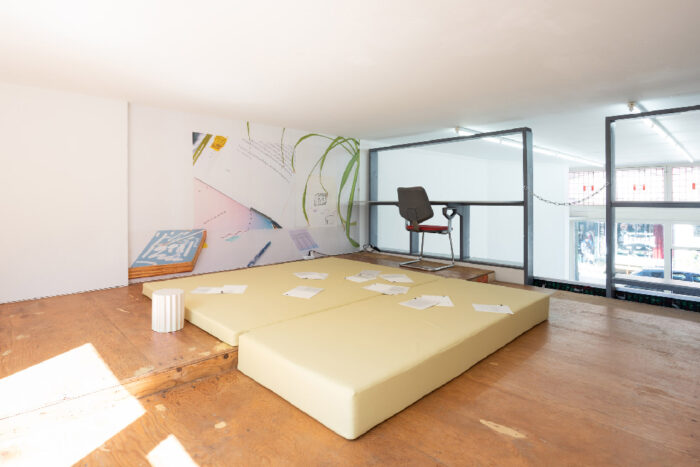
Father of the red balloon fatally caught in the industry’s wires? Wait, it gets weirder! Lamorisse in fact also invented the board game today known as “Risk”, originally called “World Conquest”—is this how he got the money to invest in the development of Helivision?. It is arguably the single most horrifyingly literal translation of the so-called “Grand Game” of imperial expansionism into a popular pastime. Red balloon dad put that into the world! Visionary dreamer, inspiring trust in the innocence of the communist flight, yet so hip to the workings of the colonial war machine that he could turn its murderous logic into a thrill for the whole family to enjoy playing Risk. (The game, in its box, was there in the show, stored and displayed in the structure Olivier Goethals had built in Rib titled “Spatial Interventions”.) So, when Lamorisse got involved with the Shah, he probably knew exactly what risky game he got himself into. He apparently even notified the authorities of the dangers posed for a helicopter by the high wires above and around the dam, and in return got the Shah’s personal pilot to fly him there. Did he then gamble his life away for VIP treatment and the price of some standard industrial film footage? Or was this death the conclusion of his dreams of making pictures fly? Well, perhaps one thing means as much as the other, and the cruel calculus of the power game is wedded inseparably to the sincere intuition of the dream, looping one back onto the other under the sign of death.
3. Death: in homes built for birth
And then what comes after? What are the surviving family, kids and friends to do when the puzzle pieces of the circumstances and character of the death they mourn don’t add up to form a readily consistent narrative, but instead let immediate, personal, singular, micro-biographical realities loop back on vast, impersonal, infrastructural, macro-political realities in the moment of death?
Again, on a personal note, I was very much touched by the setting in which Jack Segbars and Bo Stokkermans filmed their video Work and Shadow-work, whispering vs. speaking (2022). The work is a recording of a heart to heart they had in what seemed like it must have been a parental home one of the two must have cleaned out, most probably after a parent passed away. The eerie echo bouncing off bare walls in a place furnished with things accumulated over decades and filled by family life presumably until recently, and now cleaned out completely, gives such a scary ring to what’s spoken that, tangibly, it offers great solace to have a friend around to buffer the bleakness of the naked reverberations in the emptied building.
Frankly, my parents’ home, while half an hour away from the Dutch border on the German side—as far as I can gather from the video—may be of the same exact type as the one Segbars and Stokkermans are having their conversation in: Swiftly built in the postwar era, wholly standardised infrastructure for housing people, targeted at national white working-class families (or those ready to start one such family) striving to get a share of the sense of material security and comfort associated with an ascent into the middle-classes, so aimed at people who wouldn’t be too picky and settle for the faintest, industrially downscaled, semblance of a middle-class home (if it has two floors, two toilets, a balcony and a bathtub, it’ll do), probably set in a cluster of terraced houses, a cul-de-sac, or ‘cauliflower’ neighbourhood, as the Dutch say, of identical buildings, sprouting up in suburban places where the populace of a newly created white lower middle class was being spread out just about thin enough for them to forget about the critical density of life in the housing blocks of urban working class quarters they had probably grown up in with their parents (my dad recalls a block he lived in after the war in Duisburg Ruhrort was called “Castle Pipi” as the shared lavatories on the corridors reeked so intensely), yes, exactly that kind of postwar box for getting kids in, kids like me, and probably also kids like the two artists conversing in the video.
Cynically put, we’re talking about the industrial standard infrastructure for the production of a new class that, while low on the overall social scale, still felt elevated high enough (two toilets!!) to stop asking for more and fear losing the little they just got (no going back to Castle Pipi). Still, I call that home. I admit that I am projecting this sense of familiarity and fear into Segbars and Stokkermans’ piece. I might be off. Or not. There just happens to be a distinctively discernible class-sadness in the air in this video that someone who belongs to that 1970s generation of postwar Northwestern-European white low-mid-kids, like me, like them too perhaps, will be experiencing when returning to the standard industrial shells built to hedge us, when the parents who gladly moved in may have moved on. I don’t think we need an ode to that feeling, and please no soundtrack by Radiohead to mope along to, but that feeling is a thing, so, when it overcomes you, having a friend around for a good chat will help.
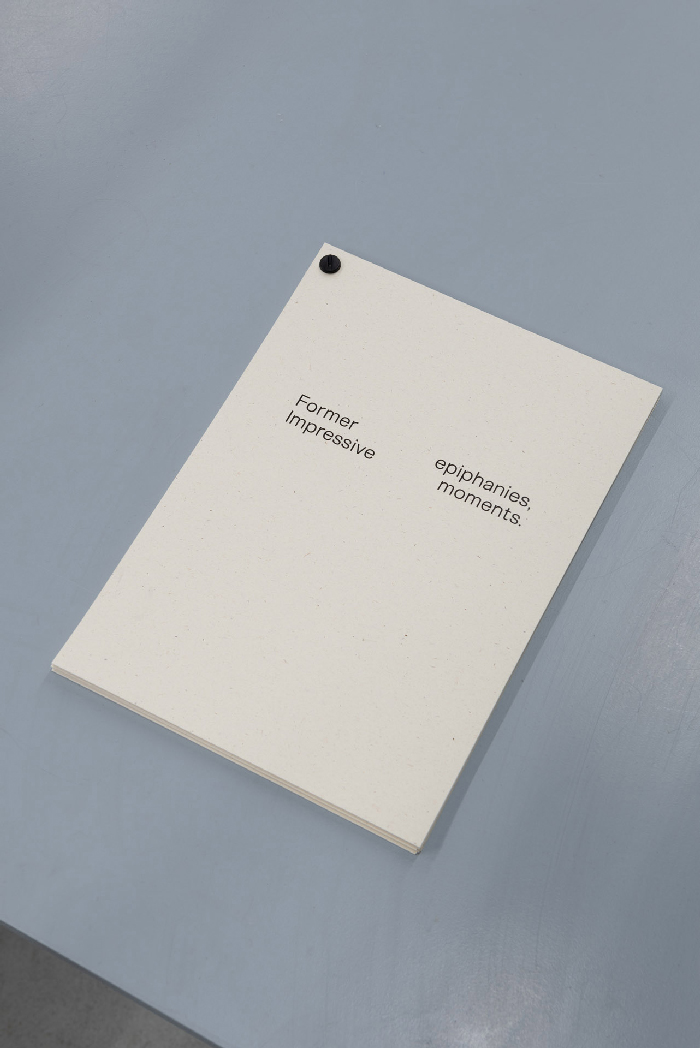
4. Death: ways to relate when infrastructure dies
What indeed seemed characteristic to the atmosphere at Rib was how conducive it actually was to the kind of convivial conversing that can branch off into existential subjects, casually and freely so, because no pressure is imposed to go there (no overly explicit discursive theme set that obliges you to cover it), but ample space and time is given for reading between lines and intuitively making connections that might inspire deeper conversations. In terms of the setting the show provided by way of its own very infrastructure, if you will, the reading room Marije de Wit designed seemed dedicated to creating a spot in which to converse: with the minds of the writers assembled in her selection of reading materials, and with other people present, the blue mats on the floor, and the very low ceiling of the mezzanine level, where the room was situated, making it both comfortable and unavoidable that you would squat or recline, like on a picnic blanket, and start reading, or chatting convivially, with stapled photocopies of essays strewn on the ground around you.
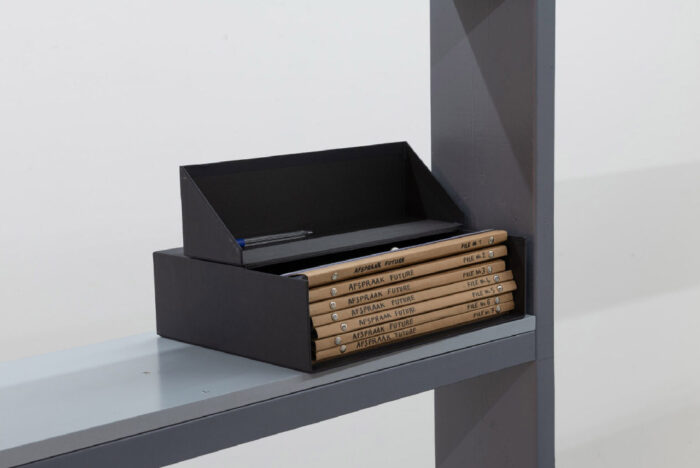
Somewhat more symbolic, mysteriously so even, yet nonetheless clearly invoking the idea of infrastructures for informal exchange was the work that—by virtue of being the first piece you’d encounter when entering Rib—arguably set the tone for the show, Eleonore Pano-Zavaroni’s piece Afspraak Future (2021): Light wooden boards were laid out side by side, and partially on top of each other, as if to prepare for the building of a mini-raft, or a makeshift platform. You could imagine it might be just about good enough to mark a place in a landscape that solitary hikers might pass and leave a note on for other, or would actually be able to find again when returning on the same path later to retrieve an answer. Indeed a curious selection of small objects were to be found lying on the wood that, by virtue of what they were and how they were placed, could conceivably be seen to be part of some long-term exchange being facilitated by the piece: a set of small stones arranged in a constellation that might mean something to whomever would be able to decipher it, an ornate little wooden box, a tiny plastic flask with pink pills or candy inside and a sticker with what looked like a picture of a pope outside. Given the work’s title and the weird nature of the assembled small things, the scenario you might want to imagine finding this mini-raft-message-board in would probably be a post-apocalyptic future in which survivors of society’s demise resort to such improvised infrastructures for staying in touch, raising the question: With the help of the assorted debris left on the wooden boards, what Afspraak or agreement might those survivors have negotiated, what promises would they have made, so as to ensure a shared future, after all institutions have died away that would have otherwise secured a general social contract?
The power of such post-apocalyptic scenarios, one could argue, lies in reversing the status of social death: What if it’s not the macro-structures that outlast the death of the individual (which it may formally register, or effectively cause, but will pass over as a matter of course) but the individual who outlives the death of the structure? What life, love, social solidarity or antagonism would, or in fact already does, emerge out of dead structures?
Kianoosh Motallebi and Matthew Kneebone would probably agree with Pano-Zavaroni that the death of structures is by no means a distant possibility, but an actual daily reality for many, if not eventually, for most: given violent global inequality in access to vital resources, established by imperialist expansionism, is now accelerated by climate change, and aggravated by new wars over fossil fuel supremacy. So, the mess is made, the damage is done, the melt-down has happened, and the air of peace, prosperity and normalcy that affluent Northwestern European countries cloud their citizen’s (aka conscripted consumers’) perception with being an illusion, a feeble one at best, as evidence of structural meltdown is visible all around. Societies just treat it as a new normal. What I’m trying to paraphrase here is what I perceive the dark humour of Motallebi’s sculpture From a Marvellous Faucet (2022) to be about: The piece consists of a solid work desk on which a no longer identifiable object, body, or entity has disintegrated into shapeless lumps of a gelatinous substance. No smoking gun, just the bizarre left-overs of a quotidian disaster with a vaguely scientific appeal which so far, no commission has been tasked with forensically investigating, or colleagues have bothered to clean up. The mess has just remained there long enough for people to get used to ignoring it.
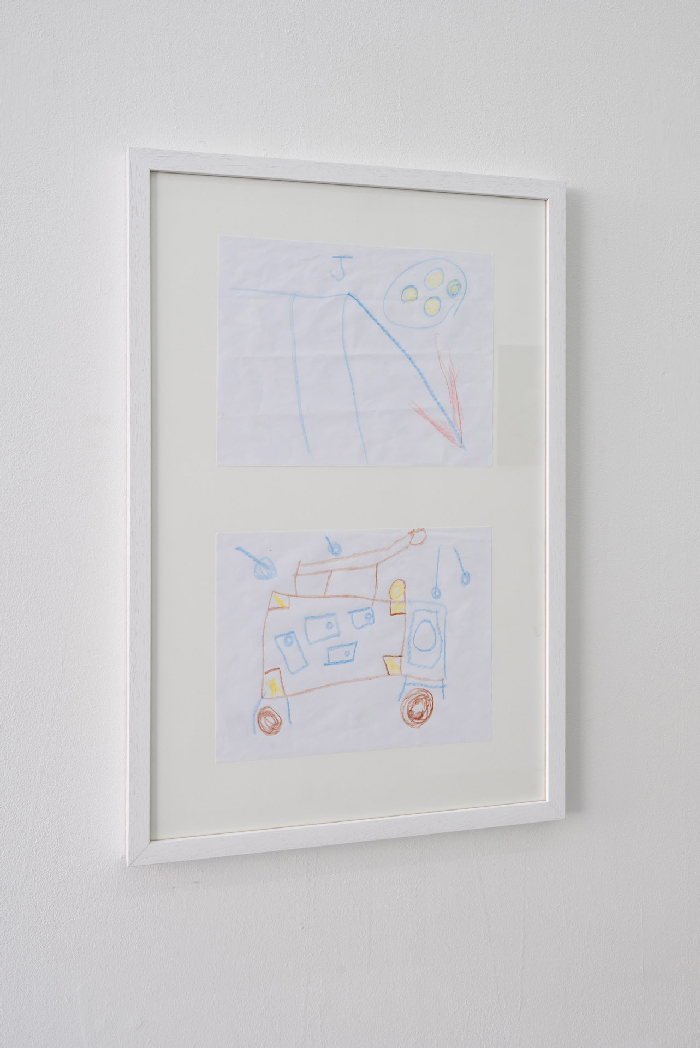
But what if precisely the opposite were to happen? What if the collectively experienced death of a social structure prompted a different sense of social awareness? What would that imply in and for daily life? These seem to be the questions Kneebone is asking via Power Relations (2021). The piece literally puts the electrical grid of California in conversation with the fuse box at Rib. Whenever there is an outage in the grid, power shuts down in the gallery too, and the show stays closed for the duration of the blackout, with a note on the door saying that that is so. Experience shows that when stuff like this happens, people talk, and awareness spreads. On one hand, this puts us in the domain of everyday political consciousness which Kneebone seems to be embracing in a positive key. On the other hand, the piece equally points to the extended temporal dimension within which the global connectedness of volatile infrastructures might need to be grasped for it to actually register: In actual fact it’s not the audience, and no advanced A.I. but the Rib fuse box that is engaging in a chat with the Cali grid all day, and all of the night, for months on end. If that box could talk, what would it say?
5. Death: engaged in live conversation
The spirit, I find, in which some of the more difficult things to talk about are sometimes best addressed, is convivially casual. It rarely helps to start things off with a serious tone and sense of gravitas, making everything heavy by default, when shifting emotional weight is actually what you set out to do.[3] By the same token, conversely however, casual convivial conversations on existential matters tend to equally also have a spiritual dimension to them. This is to say, conversations of a certain depth never seemed contained by and within one dimension of reality only, they much rather travel across dimensions of reality, from present to past, feeling to memory, person to people, case to condition, biography to history, and thereby will engage the spirits of the currently absent, or no longer physically present.
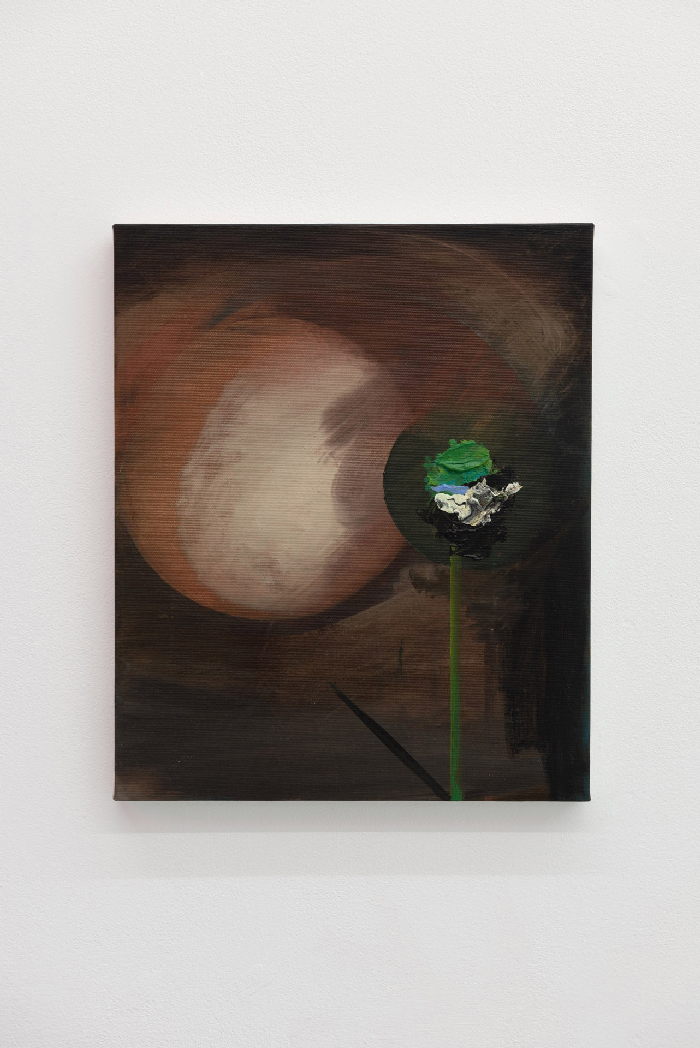
So, when asking “what does unresolved death leave us, the living, with?” one answer is, it may first of all leave us in the company of many restless spirits, some manifest, in the flesh and perceptible to the five senses, and others present via writing, via art, or other atmospheric traces in a less tangible form, but accessible nonetheless everyday via a sixth sense of vivid intuition for communing with spirits of different provenance. One vital word, artist Samboleap Tol taught me (in a seminar conversation at the Piet Zwart Institute) for how to name this mode of conversing daily across different dimensions, is to “chat” with spirits. A medium truly fit for mourning death, and overcoming death by allowing the dead to keep the company of the living, and vice versa, Tol said—or this is how I received it—may neither, or not exclusively, be the sequestered privacy of silent prayer, nor the institutional public of official ceremonies, but the daily chats you may have across the boundaries between the visible and invisible world, by yourself or among people.
Making Cali and Rib converse in a practical spirit of literal material alignment might very well still qualify as a spirited exchange across realities, between here and there, and frankly, I do consider reading rooms to be temples of sorts, and spirited reading a parapsychological practice of fusing with the spirits of other people. But I would equally insist that fully acknowledging the reality, possibility, and necessity of spiritual communication as a part of everyday exchanges—as Tol does by naming them “chats”—today still means raising the stakes. Spiritual matters are frowned upon by many, notably also in academic circles where practices of everyday conversing across realities may be described theoretically by disciplines like anthropology, ethnography, or art history (insofar as it borrows from the first two), but never ever considered a practice a modern mind was to engage in, on a daily basis. This denial keeps begging the question what the hell we think we’re doing when conversing with a piece of art if not engaging in a spiritual chat across dimensions? It effectively remains an insulting reminder of the imperialist directive that triumphs of modern science, like machine guns, power plants and hydro-electric dams, have proven the world-historical superiority of instrumental reason over spiritual intuition, so that any allegiance to the spiritual must be denied, and externalised by way of being “scientifically” conceptualised, and studied as other culture’s (terminally dated false) beliefs.
Overcoming the imperial calculus of denial and externalisation effectively begins with getting away from addressing the sense for the spiritual in terms of the “super”-normal. It is by ascribing the status of the weirdly exceptional to all that is truly inter-, multi- or para-dimensional, that imperial reason sets the conditions for both excluding practices and forms of consciousness engaged in conversing across dimensions from the fields of institutionally validated discourse, and exoticising and orientalising them for entertainment purposes (along the lines of crystal balls, airborne rugs and bottled genies). Breaking the grip of this fatal double bind (of being deemed unfit for discourse but fit for arousing dreams and fears) therefore practically means removing the fatal labelling of spiritual matters as “super”-normal or “extra”-ordinary, or in any way “out of” this world. It’s precisely what Tol advocates for by referring to spiritual practices in the key of daily chats.
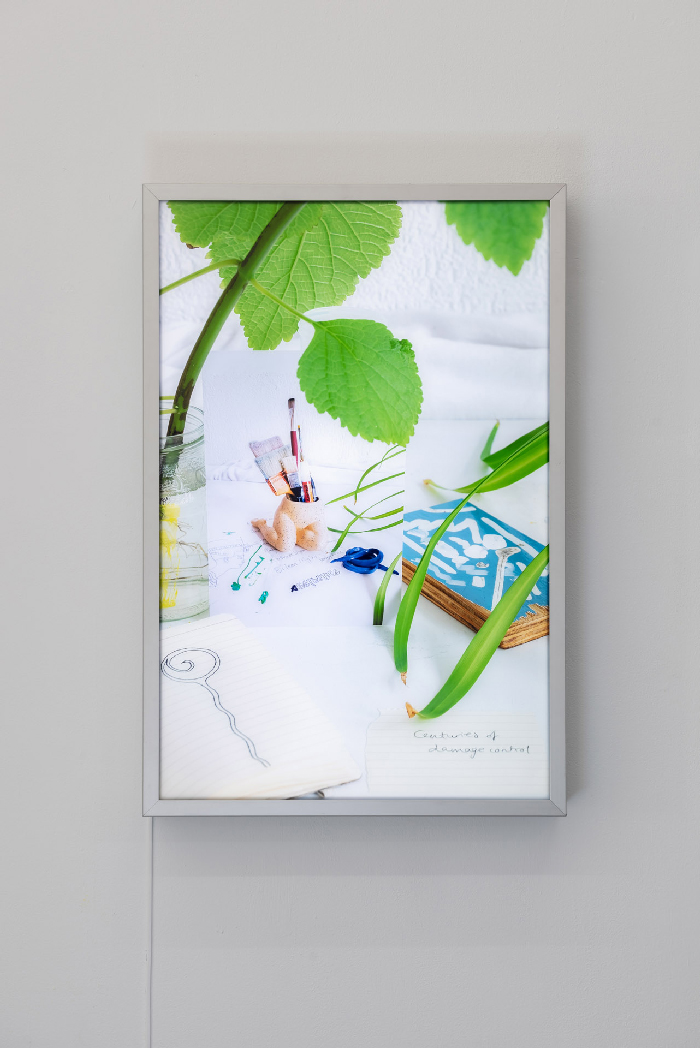
This is the key I also see Shahin Afrassiabi communicate in, through his paintings. They convey a sense of – or rather for – presences which five senses may somewhat register but not exhaustively. The particular feeling of presence his paintings invoke, however, never seems to imply that what the five senses cannot exhaust would therefore be “beyond” them, relegating it to the realm of the “super”-normal. On the contrary, the deeply poetically material quality of Afrassiabi’s paintings make you relate to the sensually inexhaustible through the senses. In Three Yellow Orbs (2019) the very orbs casually introduced in the title present themselves to your eyes in a most unassumingly forthcoming way. They say hello, being set, as they are, in the center of the small painting, in a constellation that makes them resemble a circle of petals, on a stem with leaves rendered in a deeply saturated green. The petals are painted in a, not overly bright, but thick and creamy yellow, a tiny bit too oily perhaps for a flower, but not quite textured like skin either, even though the paint suggests a volume greater than what petals may possess but a rounded body might. So, as casual as the key is in which the orbs present themselves, as mysterious it remains what entity you might here be encountering. This is not even yet mentioning the sombre brown color that surrounds stem and petals, the color glows with what I can only describe as a dark shade or sheen of copper. The brown is too rich to understatedly recede into the background, yet too calm and even to push to the fore and rival the orbs’ appearance. So, the dark lingers around them, engaged in a perpetual energy exchange, in a state of fluctuation, between the corporeal oily petals and their deeply animate sombre milieu.
What if mortality indeed manifested itself around living beings, creatures, cells in the key Afrassiabi renders tangible: Not as a sharp contour encircling a body, defining where it ends and where what supersedes it starts, confining it within its limits. But as a fluctuating presence, accentuating its physical volume rather than delineating its outlines, not like a shadow but like a reverberation would when it extends a sound in space and time, adding dimensionality and depth, while being mixed in, and inseparable from the sound it modifies. None of these qualities are conciliatory or redemptive. On the contrary, something remains unsettling about them which doesn’t die down as you keep gazing at the painting watching the darkness hover around the orbs and the orbs hover in the dark. The point is simply that it’s all there, uncodified by ceremony or religious protocol, not relegated to realms beyond the sphere of daily relations, but instead, as Tol describes it, sending and receiving on a common channel for conversing with the mortal elements life inhabits across different dimensions. On this aura chat channel, we may then artistically, communally, casually enter that state of energy exchange Afrassiabi renders tangible in his painting: The fluctuation between what senses pick up and what in the sensually received stays sensually inexhaustible, yes, infusing death with the love of life, and vice versa, is actually taking place here. In the light of this sensation, however, it still remains a huge spirito-political undertaking to converse with death, in its modern double guise as singular and structural, while chatting across dimensions, histories, and generations.
[1] Baruch Spinoza: Ethics, 4th part, proposition 67.
[2] What I write in the following are essentially speculative embellishments added to the excellent reconstruction Latifeh Ehteshami and Lucy Raven perform in their essay On Albert Lamorisse’s The Lovers’ Wind published by Bidoun Magazine, in Issue 19: Noise (Winter 2009/2010), accessed online via bidoun.org in the first week of August 2020.
[3] And I fear that indeed by getting into this text with Spinoza, Mom, and Gomorrah, I might, by Germanic default, have set the tone too heavy, so there you go…


